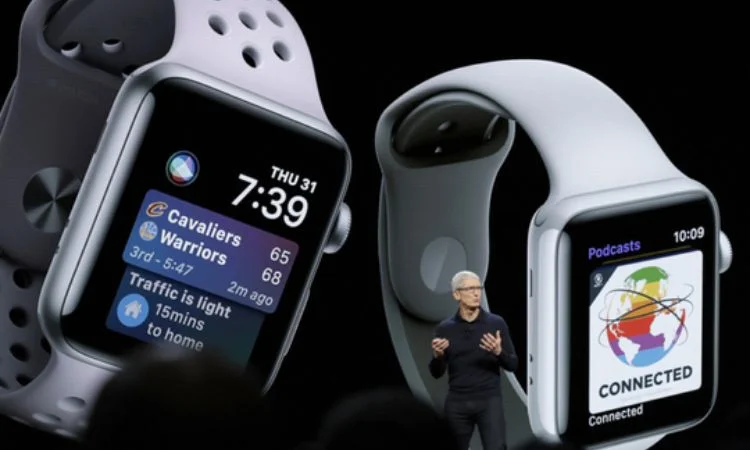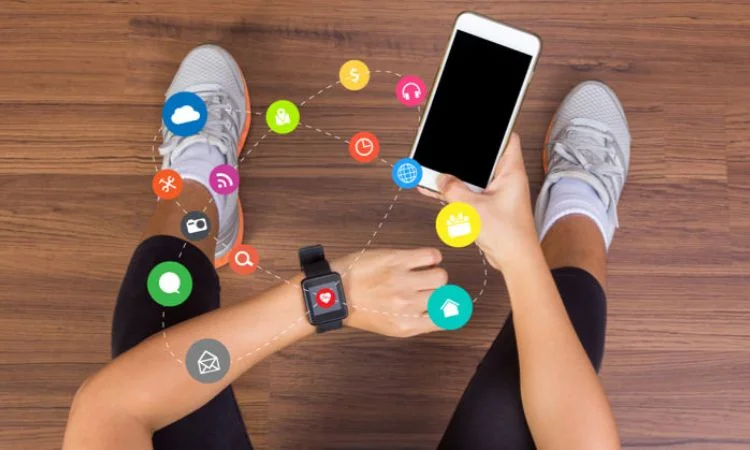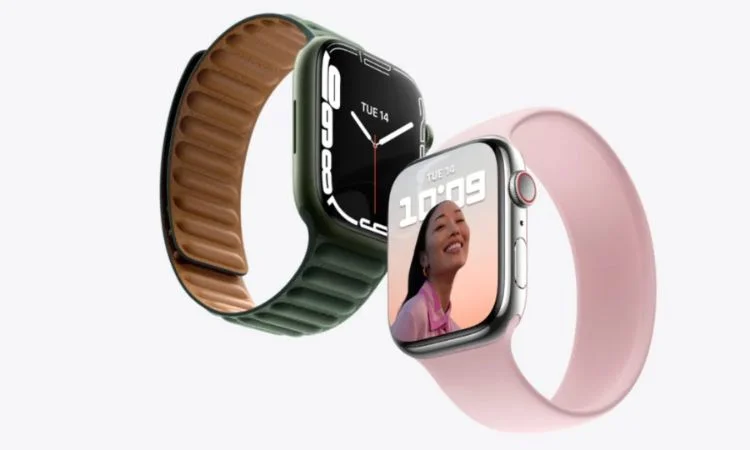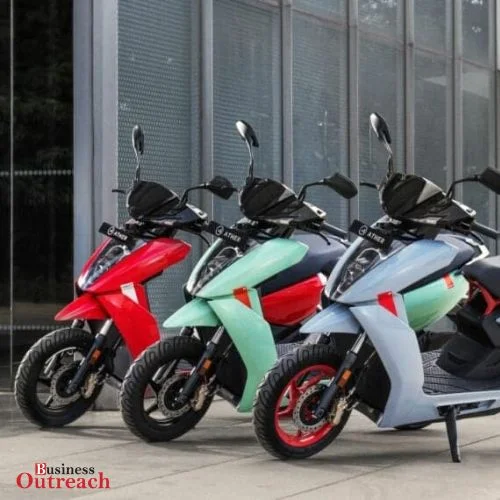The evolution of human civilization has witnessed a remarkable progression in the realm of comfort and luxury, marked by the increasing accessibility of advanced technologies. In this pursuit of modern convenience, it comes as no surprise that a perceived ‘need’ has emerged for sophisticated gadgets that embody luxury. At the forefront of this technological elegance stands Apple, a brand synonymous with a commitment to quality, opulence, and aesthetic refinement.

Consider the iPhone, a quintessential example of Apple’s dedication to not only delivering a superb user interface but also elevating the product to a realm of aesthetic prowess. For many, ownership of an iPhone extends beyond its functional utility; it becomes a symbol of refined taste and style.
Beyond smartphones, Apple has strategically expanded its footprint into the wearable and hearable industries. The trajectory of this expansion has accelerated, particularly in the wake of the global pandemic. Prior to the outbreak of the Coronavirus, these markets exhibited a relatively subdued growth rate. However, the landscape has transformed as people adapt to a more sedentary lifestyle, where the boundaries between living spaces and workspaces blur, making Apple’s foray into wearables and hearables more pertinent than ever.
Unraveling the Quantum Leap in Shipment Volume and Market Dominance:
The graphical representation illustrates the variability in iPhone shipments over recent years, depicting a pinnacle of 231.2 million units in 2021 and a decline to 195.6 million units in 2019. Notably, Apple maintained a 21.5% market share in wearable device unit shipments during the first quarter of 2023.
The deceleration in iPhone shipment growth can be attributed to several factors, warranting thoughtful consideration. Firstly, a plausible explanation is the saturation of the smartphone market, wherein the demand may have reached a plateau.
Secondly, shifting consumer preferences towards alternative devices such as tablets and laptops may contribute to the observed trend. Additionally, the formidable presence of Chinese smartphone brands has emerged as a substantial challenge to Apple, adding a layer of complexity to the competitive landscape. As the market dynamics evolve, a comprehensive analysis of these factors is essential for informed strategic planning.
The graphical representation illustrates the progressive evolution of Apple’s market share, demonstrating a commendable ascent from 13% in 2019 to an impressive 18% in 2022. This consistent upward trajectory reflects the company’s adept positioning in the market, setting it apart from its counterparts.
“Apple’s Strategic Influence: A Beacon in the Wearable Tech Revolution”
In the realm of wearable technology, the market attained a valuation of $61.30 billion in 2022. Projections indicate a substantial expansion, with the market size anticipated to burgeon from $186.48 billion in 2023 to an estimated $419.44 billion by 2028.
In this transformative journey, Apple is poised to play a pivotal role, leveraging its market influence to contribute significantly to the realization of this ambitious growth target.
Reasons Behind The Apple Leads in Smart Wearables:

Apple Authenticity
The preeminent position of Apple in the wearables industry can be attributed to the unwavering authenticity that defines its products. Apple’s distinctive and original approach sets its offerings apart, underscoring its dominance in the market.
While Apple may not always be the originator of a particular product, its commitment to maintaining uniqueness and delivering unparalleled quality distinguishes it as a leader. The company consistently introduces refined versions of existing products, contributing to its unparalleled success in the wearables sector.
Apple’s Good User Interface
In contemporary brand landscapes, where a predominant emphasis is placed on user interface design, Apple distinguishes itself by consistently introducing innovative elements into its UI. Apple’s unique approach transcends conventional user interactions, fostering a profound sense of user belonging to its products.
A noteworthy exemplar of this paradigm is found in the Apple Watch Active 2. Remarkably, this device integrates the captivating Memoji feature, enabling users to personalize and tailor their virtual representation to their preferences. This commitment to user-centric design underscores Apple’s unwavering dedication to enhancing the overall user experience and further solidifies its position as a trailblazer in the realm of technological innovation.
Apple’s Wearables features
Apple’s Wearables encompass a rich array of features that have evolved beyond their initial designation as fitness trackers, transforming into versatile accessories. In their nascent stage, these wearables primarily served as fitness trackers, catering to the needs of sports enthusiasts. However, as consumer preferences evolved, a discernible demand emerged for a more comprehensive and easily accessible device.

This shift in consumer expectations prompted a significant evolution in the functionality of Apple’s Wearables. Users sought a holistic solution that seamlessly integrated fitness tracking capabilities with everyday conveniences. Apple adeptly recognized and responded to this demand, revolutionizing the wearable technology landscape.
The Wearables from Apple now stand as a complete package, offering not only advanced fitness tracking features but also serving as efficient tools for communication and entertainment. Users can effortlessly engage in tasks such as texting, emailing, answering calls, and enjoying music, all within the compact and stylish framework of these devices. In essence, Apple has strategically redefined the role of wearables, transcending the conventional boundaries of fitness tracking to deliver a multifaceted and indispensable user experience.
Apple Credibility
Having cultivated a profound familiarity with the brand and its sustained market prominence, a sense of trust naturally develops. This trust forms the cornerstone for reciprocal engagement as the company embarks on its expansion journey.
Apple’s foray into wearable technology underscores its unwavering commitment to upholding the company’s esteemed credibility, ensuring customers are endowed with unparalleled experiences.
Apple luxury
The affiliation of a brand with luxury represents a coveted aspiration for consumers throughout their lifetime. The demand for luxury is intrinsic to societal and consumer socialization requirements. Apple has established a distinguished reputation for delivering services that epitomize luxury. The pricing of Apple wearables further positions them within the realm of premium and opulent products.
The Pandemic Paradigm: How Sedentary Lifestyles Propel Apple’s Surge
The surge in demand for Apple products during the Coronavirus pandemic can be attributed to the prevalent sedentary lifestyle it has induced. This unprecedented shift has significantly influenced consumer behavior, driving a notable increase in sales within the technology industry. In times of uncertainty, individuals are inclined to invest in products that offer both enhanced benefits and durability, even if they come at a slightly higher price point.
Apple’s Appeal in an Era of Unprecedented Demand
In comparison to competitors, Apple’s wearables are positioned as lifestyle products rather than essential commodities, contributing to their relatively higher price range. The discerning consumer, when evaluating options, seeks a brand that not only aligns with their preferences but also provides superior value for the investment made. In this regard, empirical data indicates that Apple excels in meeting these criteria.
Decoding Apple’s Premium Positioning in Wearables
Noteworthy examples of Apple’s wearable devices include the Apple Watch, AirPods, AirPods Max, AirTag, Laptop Tag, among others. As consumers increasingly prioritize quality, innovation, and a seamless integration of technology into their daily lives, Apple’s products emerge as the preferred choice within the competitive landscape.
This trend underscores Apple’s continued success and growth within the sector, as the company strategically positions itself as a leader in delivering cutting-edge, high-quality technology solutions that resonate with the evolving needs of the contemporary consumer.
Growing Sector
The wearables industry is currently experiencing remarkable growth, emerging as one of the most rapidly expanding business sectors. Despite Apple’s established prominence as a mega brand, it is evident that there has been a noteworthy surge in its user base.
This trend is not exclusive to Apple alone; rather, it extends to other firms within the industry. The escalating market and demand for Apple wearables are poised to significantly contribute to the company’s market share expansion, affording it a distinct competitive advantage over its rivals.
Future Of Apple Wearable Devices
Apple Watch Series 10:
Anticipated for release in September 2024, the Apple Watch Series 10 is poised to introduce a host of advancements. Speculations suggest a redesigned aesthetic, a swifter processor, and enhanced health sensors, showcasing Apple’s commitment to innovation in wearable technology.
AirPods Pro 3:
The forthcoming AirPods Pro 3, projected to debut in the autumn of 2024, is rumored to boast a novel design alongside notable improvements. These enhancements encompass superior noise cancellation capabilities and support for lossless audio, reflecting Apple’s dedication to delivering an unparalleled audio experience.
Apple AR/VR Headset:
In a stride toward groundbreaking technology, Apple is reportedly developing a mixed-reality headset seamlessly merging augmented reality (AR) and virtual reality (VR). Set for release in 2024, this intelligent wearable device promises users the ability to engage with digital elements in the physical world, providing an immersive experience through virtual reality.
Apple Glasses:
Looking ahead to 2025 or 2026, Apple is said to be in the works on smart glasses designed to redefine how users interact with the world. These innovative glasses will empower users to engage with digital content and information in their immediate surroundings, liberating them from the need to rely on a smartphone for such interactions. The anticipated release underscores Apple’s commitment to pioneering advancements in augmented reality.
Conclusion
Apple’s triumph in the smart wearables sector underscores its capacity for evolution, innovation, and adept responsiveness to the ever-changing demands of consumers. In the midst of the burgeoning wearables industry,
Apple’s strategic positioning, unwavering dedication to authenticity, user-centric design philosophy, and ongoing commitment to innovation collectively establish it as a frontrunner, strategically positioned for enduring success in the foreseeable future.
Apple’s enduring success can be attributed to the trust and credibility it has meticulously built over the years. The brand has become synonymous with reliability, establishing a foundation for sustained consumer engagement. Apple’s strategic venture into the realm of wearables underscores its unwavering commitment to upholding credibility, thereby guaranteeing customers unparalleled experiences.















